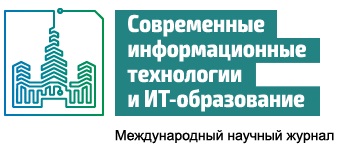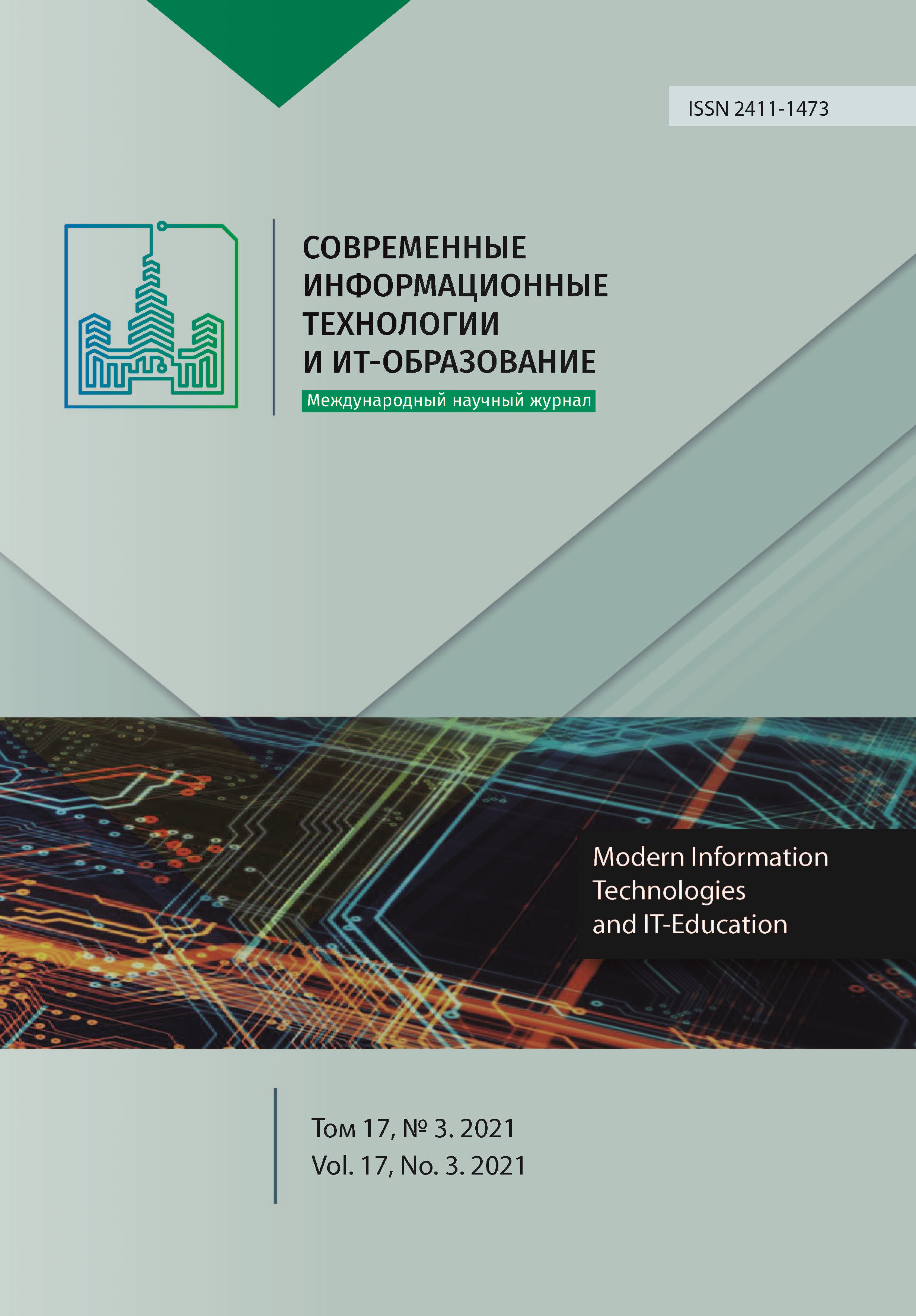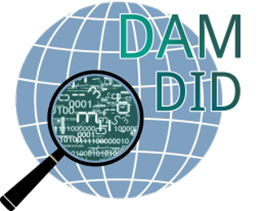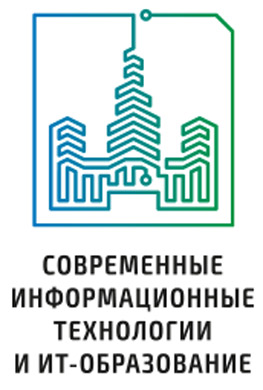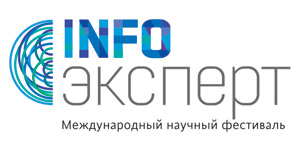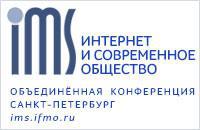Методы и модели идентификации протяженных информационных объектов с использованием клеточных автоматов
Аннотация
В статье исследовано применение подхода с использованием решетчатых моделей и теории клеточных автоматов при идентификации протяженных объектов на изображениях, получаемых в ходе мониторинга урбанизированных территорий. Такие изображения обладают определенной степенью "размытости", вызванной не только ограничениями самих снимков, но и неполнотой принятой модели объекта, алгоритмов обработки, термодинамическими и квантовыми эффектами. Для созданной методики и ее программной реализации было проведено исследование с целью оценки оперативности получения результатов и качества работы. В качестве критериев оценки выбраны параметры алгоритмов сегментации и идентификации объектов земной поверхности. Как вариант клеточного автомата в работе рассмотрено ранее разработанное устройство фильтрации бинарного изображения. Целью разработки устройства подобного устройства фильтрации является повышение быстродействия за счет распараллеливания выполняемых процедур, характерного для клеточного автомата, имеющего параллельную (не "фоннеймановскую") архитектуру. Представлена схема элемента матрицы памяти рассматриваемого устройства. Показано, что набор признаков идентификации может быть расширен за счет применения элементов триангуляции. Внедрение элементов триангуляции и добавление в процессе построения триангуляционной сетки дополнительных опорных точек могут быть использованы в процессе мониторинга для обозначения потенциально уязвимых объектов. Кроме того, предлагаемая методика позволяет извлекать новую информацию из изображений о таких объектах. Пример подобной информации также представлен в статье. Полученные результаты позволяют с оптимизмом воспринимать ведущиеся разработки и рекомендовать использование разработанной методики при оперативной идентификации протяженных объектов при дистанционном зондировании Земли.
Литература
1. Kramarov S., Khramov V. Methodology of Formation of Unite Geo-Informational Space in the Region. In: Ed. by V. Sukhomlin, E. Zubareva. Modern Information Technology and IT Education. SITITO 2018. Communications in Computer and Information Science. 2020; 1201:309-316. Springer, Cham. (In Eng.) DOI: https://doi.org/10.1007/978-3-030-46895-8_24
2. Azikov D.O. Imitacionnoe tablichnoe modelirovanie kletochnyh avtomatov [Simulation table modeling of cellular automata]. Proceedings of the International Conference on New tasks of technical sciences and ways to solve them. Aeterna, Perm; 2016. p. 5-8. Available at: https://www.elibrary.ru/item.asp?id=27272320 (accessed 24.06.2021). (In Russ.)
3. Avdeev S., Bogatov N. A new approach to predicting critical situations using adaptive non-uniform cellular automaton. Informatsionnye resursy Rossii = Information resources of Russia. 2015; (1):37-41. Available at: https://www.elibrary.ru/item.asp?id=22996230 (accessed 24.06.2021). (In Russ., abstract in Eng.)
4. Lukyanov G.V., Nikishin D.A. Applied Aspects of Modeling of Information Systems. Sistemy i Sredstva Informatiki = Systems and Means of Informatics. 2017; 27(1):134-154. (In Russ., abstract in Eng.) DOI: https://doi.org/10.14357/08696527170110
5. Bashabsheh M., Maslinkov B. Simulation modeling of the spatial spread of epidemics (cholera for example) using the method of cellular automata using the Anylogic. Naukovedenie. 2013; (6):127. Available at: https://www.elibrary.ru/item.asp?id=21405226 (accessed 24.06.2021). (In Russ., abstract in Eng.)
6. Narin′yani A.S. Non-Factors (IM-IN-UN′S): Short Introduction. Novosti Iskusstvennogo Intellekta. 2004; (2):52-63. Available at: http://www.raai.org/library/ainews/getainews.php?2004 (accessed 24.06.2021). (In Russ., abstract in Eng.)
7. Mayorov V.D., Khramov V.V. Heuristic ways of contour coding of models of information objects in robot vision. Vestnik Rostovskogo gosudarstvennogo universiteta putej soobshcheniya. 2014; (1):62-69. Available at: https://www.elibrary.ru/item.asp?id=21391925 (accessed 24.06.2021). (In Russ., abstract in Eng.)
8. Dedegkaev A.G., Ryzhkov A.A. The method of designing the structure of neural networks based on cellular automata. Universum: Engineering Sciences. 2013; (1):9. Available at: https://www.elibrary.ru/item.asp?id=20928478 (accessed 24.06.2021). (In Russ., abstract in Eng.)
9. Crooks A. Cellular Automata. In: The International Encyclopedia of Geography: People, the Earth, Environment, and Technology. John Wiley & Sons, Inc.; 2017. (In Eng.) DOI: https://doi.org/10.1002/9781118786352.wbieg0578
10. Castro R., Gómez R., Arancibia L. Fine material migration modelled by cellular automata. Granular Matter. 2022; 24(1):14. (In Eng.) DOI: https://doi.org/10.1007/s10035-021-01173-8
11. Dehbozorgi L., Sabbaghi R., Kashaninia A. Realization of processing-in-memory using binary and ternary quantum-dot cellular automata. The Journal of Supercomputing. 2022; 78(5):6846-6874. (In Eng.) DOI: https://doi.org/10.1007/s11227-021-04152-1
12. Kakogeorgiou I., Karantzalos K. Evaluating explainable artificial intelligence methods for multi-label deep learning classification tasks in remote sensing. International Journal of Applied Earth Observation and Geoinformation. 2021; 103:102520. (In Eng.) DOI: https://doi.org/10.1016/j.jag.2021.102520
13. Matyushkin I.V., Zapletina M.A. Cellular automata review based on modern domestic publications. Computer Research and Modeling. 2019; 11(1):9-57. (In Russ., abstract in Eng.) DOI: https://doi.org/10.20537/2076-7633-2019-11-1-9-57
14. García-Martínez R., Britos P., Rodríguez D. Information Mining Processes Based on Intelligent Systems. In: Ed. by M. Ali, T. Bosse, K. V. Hindriks, M. Hoogendoorn, C. M. Jonker, J. Treur. Recent Trends in Applied Artificial Intelligence. IEA/AIE 2013. Lecture Notes in Computer Science. 2013; 7906:402-420. Springer, Berlin, Heidelberg. (In Eng.) DOI: https://doi.org/10.1007/978-3-642-38577-3_41
15. Korotkin A.A., Maksimov A.A. Cellular-Local Algorithm for Localizing and Estimating of Changes in Binary Images. Automatic Control and Computer Sciences. 2016; 50(7):453-459. (In Eng.) DOI: https://doi.org/10.3103/S0146411616070129
16. Kramarov S.O., Khramov V.V. A systems engineering approach to the study of complex multivariate systems based on soft models. Intellectual resources – regional development. Intellektual’nye resursy – regional’nomu razvitiyu = Intellectual Resources for Regional Development. 2018; 4(1):222-228. Available at: https://www.elibrary.ru/item.asp?id=36739538 (accessed 24.06.2021). (In Russ., abstract in Eng.)
17. Kramarov S.O., et al. Delaunay triangulation-based methodology of intelligent navigation and control of mobile objects. Gornyj informacionno-analiticheskij bjulleten' = Mining Informational and Analytical Bulletin. 2021; (2):87-98. (In Russ., abstract in Eng.) DOI: https://doi.org/10.25018/0236-1493-2021-2-0-87-98
18. Akperov G.I., Khramov V.V. A Fuzzy Semantic Data Triangulation Method Used in the Formation of Economic Clusters in Southern Russia. In: Ed. by R. Aliev, J. Kacprzyk, W. Pedrycz, M. Jamshidi, M. Babanli, F. Sadikoglu. 10th International Conference on Theory and Application of Soft Computing, Computing with Words and Perceptions – ICSCCW-2019. ICSCCW 2019. Advances in Intelligent Systems and Computing. 2020; 1095:340-344. Springer, Cham. (In Eng.) DOI: https://doi.org/10.1007/978-3-030-35249-3_43
19. Yan S., et al. Large-scale crop mapping from multi-source optical satellite imageries using machine learning with discrete grids. International Journal of Applied Earth Observation and Geoinformation. 2021; 103:102485. (In Eng.) DOI: https://doi.org/10.1016/j.jag.2021.102485
20. Dunker J., Hartmann G., Stohr M. Single view recognition and pose estimation of 3D objects using sets of prototypical views and spatially tolerant contour representations. Proceedings of 13th International Conference on Pattern Recognition. IEEE Press, Vienna, Austria. 1996; 4:14-18. (In Eng.) DOI: https://doi.org/10.1109/ICPR.1996.547225
21. Zhu Y., Geiß C., So E. Image super-resolution with dense-sampling residual channel-spatial attention networks for multi-temporal remote sensing image classification. International Journal of Applied Earth Observation and Geoinformation. 2021; 104:102543. (In Eng.) DOI: https://doi.org/10.1016/j.jag.2021.102543
22. Sara D., et al. Hyperspectral and multispectral image fusion techniques for high resolution applications: a review. Earth Science Informatics. 2021; 14(4):1685-1705. (In Eng.) DOI: https://doi.org/10.1007/s12145-021-00621-6
23. Yang J., Li G. Earth Observation data integration and opening system. 2016 IEEE International Geoscience and Remote Sensing Symposium (IGARSS). IEEE Press, Beijing, China; 2016. p. 5481-5484. (In Eng.) DOI: https://doi.org/10.1109/IGARSS.2016.7730428
24. Morán A., Frasser C.F., Roca M., Rosselló J.L. Energy-Efficient Pattern Recognition Hardware With Elementary Cellular Automata. IEEE Transactions on Computers. 2020; 69(3):392-401. (In Eng.) DOI: https://doi.org/10.1109/TC.2019.2949300

Это произведение доступно по лицензии Creative Commons «Attribution» («Атрибуция») 4.0 Всемирная.
Редакционная политика журнала основывается на традиционных этических принципах российской научной периодики и строится с учетом этических норм работы редакторов и издателей, закрепленных в Кодексе поведения и руководящих принципах наилучшей практики для редактора журнала (Code of Conduct and Best Practice Guidelines for Journal Editors) и Кодексе поведения для издателя журнала (Code of Conduct for Journal Publishers), разработанных Комитетом по публикационной этике - Committee on Publication Ethics (COPE). В процессе издательской деятельности редколлегия журнала руководствуется международными правилами охраны авторского права, нормами действующего законодательства РФ, международными издательскими стандартами и обязательной ссылке на первоисточник.
Журнал позволяет авторам сохранять авторское право без ограничений. Журнал позволяет авторам сохранить права на публикацию без ограничений.
Издательская политика в области авторского права и архивирования определяются «зеленым цветом» в базе данных SHERPA/RoMEO.
Все статьи распространяются на условиях лицензии Creative Commons «Attribution» («Атрибуция») 4.0 Всемирная, которая позволяет другим использовать, распространять, дополнять эту работу с обязательной ссылкой на оригинальную работу и публикацию в этом журналe.
